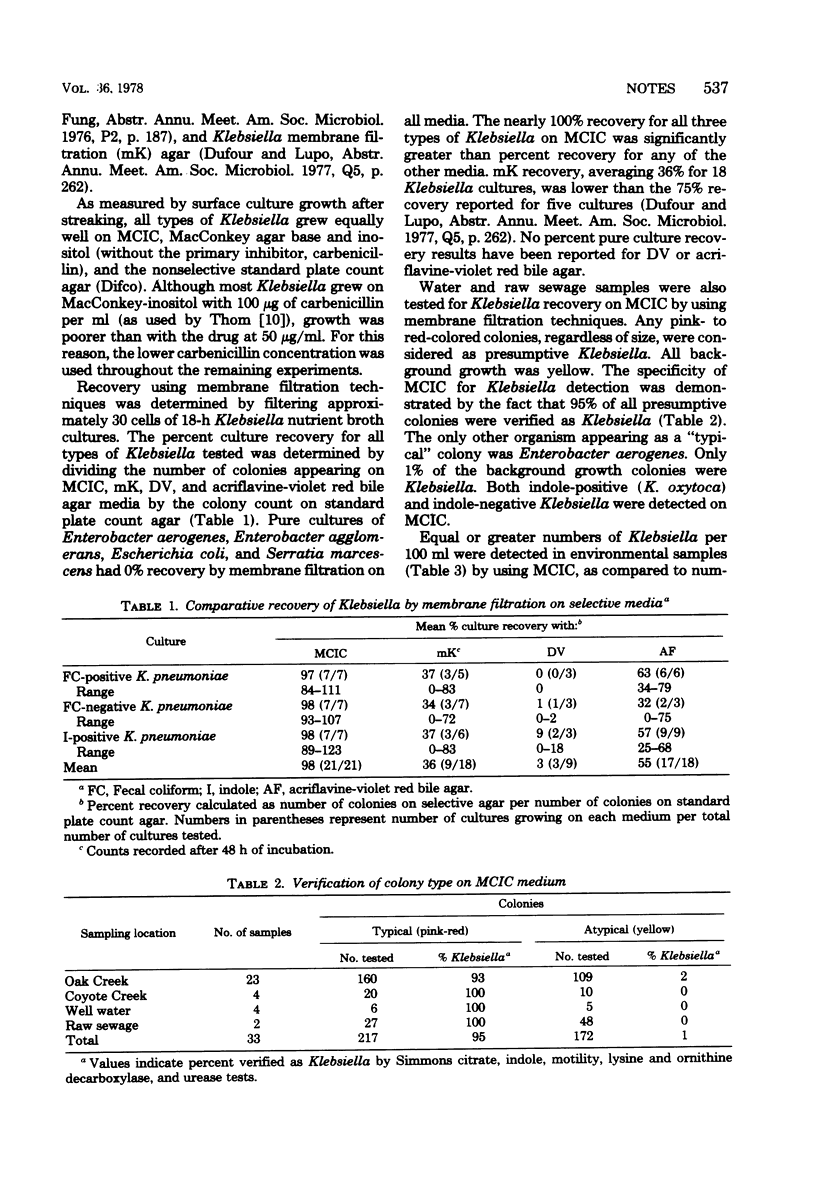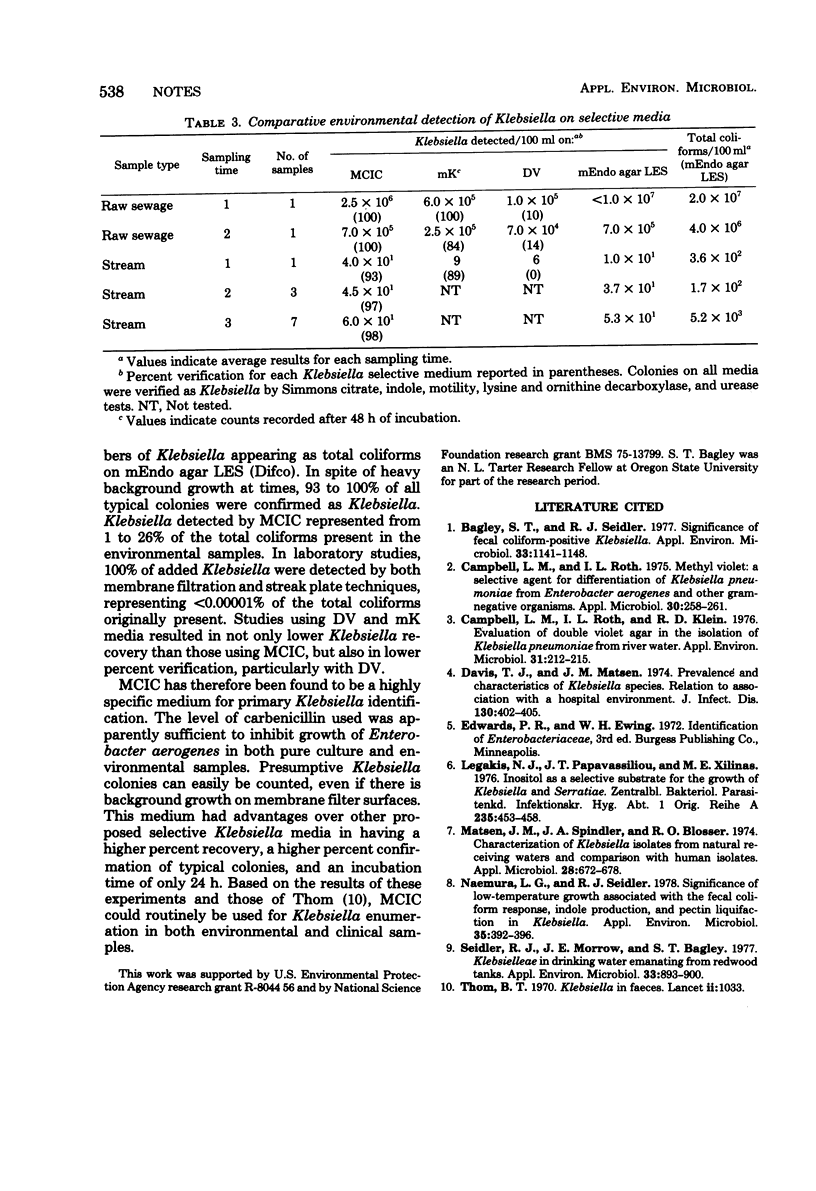Abstract
MacConkey-inositol-carbenicillin agar has successfully been used as a primary selective medium for Klebsiella enumeration. With pure cultures, nearly 100% recovery of Klebsiella was observed by membrane filtration. With environmental samples using membrane filtration, 95% of typical pink- to red-colored colonies were verified as Klebsiella, as opposed to only 1% of yellow background colonies. Recovery of Klebsiella on MacConkey-inositol-carbenicillin agar was as good or better than on mEndo agar LES (Difco Laboratories). Recovery and percent colony confirmation with MacConkey-inositol-carbenicillin agar were greater than for other proposed Klebsiella selective media.
Full text
PDF


Selected References
These references are in PubMed. This may not be the complete list of references from this article.
- Bagley S. T., Seidler R. J. Significance of fecal coliform-positive Klebsiella. Appl Environ Microbiol. 1977 May;33(5):1141–1148. doi: 10.1128/aem.33.5.1141-1148.1977. [DOI] [PMC free article] [PubMed] [Google Scholar]
- Campbell L. M., Roth I. L., Klein R. D. Evaluation of double violet agar in the isolation of Klebsiella pneumoniae from river water. Appl Environ Microbiol. 1976 Feb;31(2):213–215. doi: 10.1128/aem.31.2.213-215.1976. [DOI] [PMC free article] [PubMed] [Google Scholar]
- Campbell L. M., Roth I. L. Methyl violet: a selective agent for differentiation of Klebsiella pneumoniae from Enterobacter aerogenes and other gram-negative organisms. Appl Microbiol. 1975 Aug;30(2):258–261. doi: 10.1128/am.30.2.258-261.1975. [DOI] [PMC free article] [PubMed] [Google Scholar]
- Davis T. J., Matsen J. M. Prevalence and characteristics of Klebsiella species: relation to association with a hospital environment. J Infect Dis. 1974 Oct;130(4):402–405. doi: 10.1093/infdis/130.4.402. [DOI] [PubMed] [Google Scholar]
- Legakis N. J., Papavassiliou J. T., Xilinas M. E. Inositol as a selective substrate for the growth of Klebsiellae and Serratiae. Zentralbl Bakteriol Orig A. 1976 Aug;235(4):453–458. [PubMed] [Google Scholar]
- Matsen J. M., Spindler J. A., Blosser R. O. Characterization of Klebsiella isolates from natural receiving waters and comparison with human isolates. Appl Microbiol. 1974 Oct;28(4):672–678. doi: 10.1128/am.28.4.672-678.1974. [DOI] [PMC free article] [PubMed] [Google Scholar]
- Naemura L. G., Seidler R. J. Significance of low-temperature growth associated with the fecal coliform response, indole production, and pectin liquefaction in Klebsiella. Appl Environ Microbiol. 1978 Feb;35(2):392–396. doi: 10.1128/aem.35.2.392-396.1978. [DOI] [PMC free article] [PubMed] [Google Scholar]
- Seidler R. J., Morrow J. E., Bagley S. T. Klebsielleae in drinking water emanating from redwood tanks. Appl Environ Microbiol. 1977 Apr;33(4):893–900. doi: 10.1128/aem.33.4.893-900.1977. [DOI] [PMC free article] [PubMed] [Google Scholar]


